The Dyson DC28 is a powerful vacuum cleaner known for its excellent suction and innovative design. However, like any mechanical device, it can develop problems over time. One of the most common issues Dyson DC28 owners face is a recline problem – when the vacuum refuses to tilt forward, making it difficult to maneuver during cleaning sessions.
Affiliate disclosure: As an Amazon associate, We'll earn a commission for every successful order through our affiliate links in the article. However, you won’t be charged anything for this.
This article provides a comprehensive guide to diagnosing and repairing recline issues with your Dyson DC28. Whether your vacuum handle is completely locked in place or you’re hearing clicking sounds when attempting to move it, we’ll walk you through the causes, solutions, and preventative measures to get your vacuum working smoothly again. With some basic troubleshooting and maintenance, you can often resolve these problems without calling a professional or replacing your vacuum.
Common Recline Issues in Dyson DC28
The recline feature of the Dyson DC28 allows the vacuum to tilt forward for easy maneuvering during cleaning. When this mechanism fails, it can render your vacuum difficult or impossible to use effectively. The most common symptoms of recline issues include:
- The vacuum handle remains locked in the upright position
- Inability to tilt the vacuum forward during operation
- Resistance when attempting to move the handle
- Clicking or unusual sounds when trying to recline the vacuum
- The need to apply excessive force to move the handle
These symptoms typically point to problems with the pivot mechanism, which allows the vacuum to transition between upright and reclined positions. Understanding why these issues occur is the first step toward fixing them.
Root Causes of Dyson DC28 Recline Problems
Dust and Debris Accumulation
The most common cause of recline issues in the Dyson DC28 is the accumulation of dust and debris inside the pivot mechanism. Over time, particles from your floors and carpets can work their way into the moving parts of the vacuum, creating friction and preventing smooth operation.
Worn or Damaged Components
With regular use, internal components such as springs, hinges, and plastic tabs can wear out or break. These parts are crucial for the proper functioning of the recline mechanism, and damage to any of them can cause the vacuum to become stuck in the upright position.
If you suspect worn or damaged components are the issue, consider replacing them.
Dyson Dc28 Parts
Dyson Genuine Pre Filter DC28

Official OEM pre-filter for optimal filtration
4YourHome Hose Assembly DC28

Durable hose with extended reach and cuffs
Fette HEPA Filters DC28
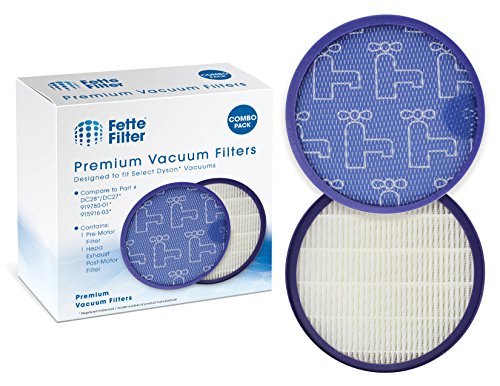
Premium HEPA pre/post motor filters
RMQDHOC Brush Bar DC28
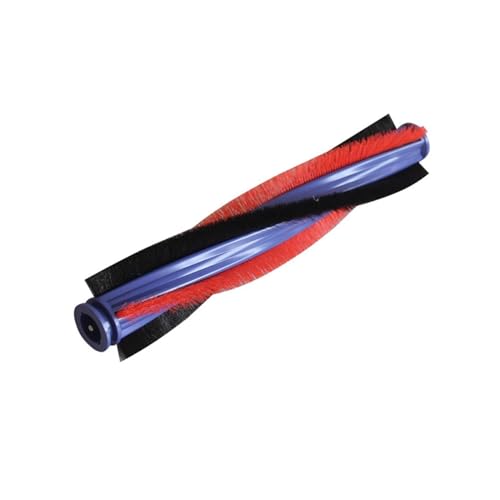
Durable brush bar for enhanced cleaning
Malfunctioning Latch Mechanism
A specific issue with DC27 and DC28 models involves the metal pin within the base becoming obstructed by dirt and debris. This pin needs to align properly with a plastic groove for the recline function to work. When dirt interferes with this alignment, the recline feature fails. Additionally, repeated use with a dirty mechanism can cause scoring on the plastic surface, making the problem worse over time.
Misalignment of Parts
Sometimes, the handle or pivot mechanism can become misaligned through regular use or after the vacuum has been bumped or dropped. This misalignment prevents the parts from moving as designed.
Physical Damage
If the vacuum has been dropped or handled roughly, physical damage to the handle, base, or locking mechanism can occur. This type of damage often requires part replacement to resolve.
If physical damage is suspected, you might need to replace the Dyson DC28 vacuum handle or the entire base unit.
Dyson Dc28 Handle Replacement
Paxanpax PFC260 Wand Handle Assembly
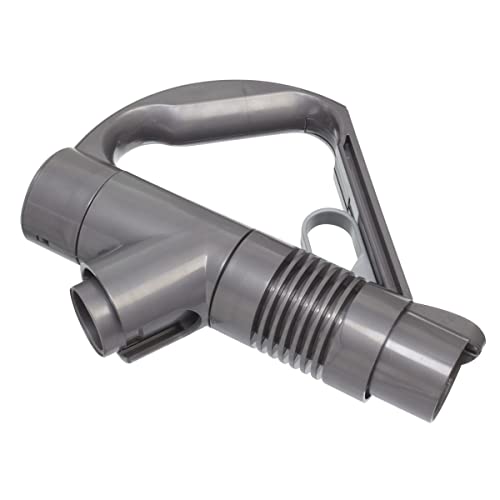
Genuine compatible replacement for Dyson DC28 with multi-model support
Abeskch DC28 Wand Handle Replacement
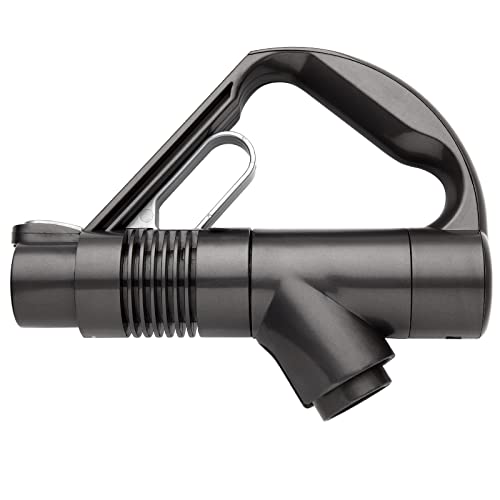
Cost-effective replacement handle for Dyson DC28 with durable build
Comprehensive Troubleshooting Guide
Initial Safety Precautions
Before attempting any repairs on your Dyson DC28:
- Unplug the vacuum from the electrical outlet
- Place it on a clean, flat surface with good lighting
- Have a small towel or cloth ready to catch any dirt or small parts
Basic Inspection Process
Examining the Handle Mechanism
- Carefully inspect the handle pivot joint for visible dust or debris
- Look for any obvious signs of damage or wear on the plastic components
- Check the base area where the handle connects for obstructions
- Test the handle by attempting to gently tilt it forward while observing any resistance points
Identifying the Specific Issue
Pay attention to where resistance occurs during the recline attempt. If there’s a clicking sound, note exactly when it happens in the recline motion. This can help pinpoint whether the problem is in the latch mechanism, pivot joint, or elsewhere.
Step-by-Step Repair Process
Cleaning the Recline Mechanism
Removing Surface Debris
- Use a soft brush to gently remove any loose particles around the pivot area
- Apply compressed air to dislodge stubborn debris from hard-to-reach areas
- Wipe down accessible surfaces with a slightly damp cloth
Deep Cleaning the Latch Mechanism
- Flip the vacuum upside down to access the base where the black latch mechanism is located
- Locate the latch that disengages the metal pin, allowing it to drop into the groove
- Clean the pin and surrounding area with a cotton swab dipped in hot soapy water
- For stubborn grime, use a small amount of contact cleaner like WD-40
- Wipe away any excess moisture and allow to dry completely
Lubricating Critical Components
If you’re lubricating the components, a suitable lubricant is essential.
Silicone Lubricant Spray
WD-40 Specialist Silicone Lubricant Spray

Triple-action protection with no residue for metal and non-metal surfaces
B’laster Industrial Strength Silicone Lubricant

Long-lasting lubrication with dirt-resistant film for industrial use
Permatex 80070 Silicone Spray Lubricant

Heavy-duty protection against dust and electrical conductivity
CRC Water Based Silicone Lubricant

Non-flammable solution for food processing and harsh environments
Choosing the Right Lubricant
- Recommended: Silicone-based spray lubricants that don’t attract dust
- Acceptable alternative: WD-40 used sparingly
- Avoid: Petroleum-based products like Vaseline, which attract dirt and can worsen the problem
Applying Lubricant to Key Areas
- Pivot Point: Apply a small amount of lubricant to the main pivot where the handle meets the vacuum body
- Clip and Rotating Component: Access these by lifting the unit from the back side of the mechanism
- Slider and Notch: If your DC28 has a spring-loaded catch, ensure these components receive lubrication
- Wipe away any excess lubricant to prevent attracting more dirt
Testing the Repair
After cleaning and lubricating:
- Return the vacuum to its upright position
- Attempt to tilt the handle forward
- The movement should be smooth with minimal resistance
- If resistance persists, repeat the cleaning and lubrication process
Advanced Repair Techniques
Disassembling the Vacuum
If basic cleaning and lubrication don’t solve the problem, you may need to disassemble parts of the vacuum for deeper access.
Tools Required
- Torx T10 screwdriver
- Small flathead screwdriver
- Pliers
- Clean work surface
- Container for screws and small parts
Disassembly Steps
- Remove the dust container
- Locate the screws around the hinge mechanism (typically Torx T10)
- Carefully remove these screws, keeping track of their positions
- Gently lift the hinge mechanism to expose internal components
Inspecting and Replacing Worn Parts
Examining Internal Components
- Check springs for stretching or damage
- Inspect hinges for cracks or breaks
- Look for worn plastic tabs or grooves
- Examine the metal pin for scoring or bending
Replacing Damaged Components
If you identify damaged parts:
- Note the part number or take clear photos
- Order replacement parts from Dyson or authorized dealers
- Follow the reverse of the disassembly process to install new parts
- Test the recline function after reassembly
If you find that the springs are damaged, they will need to be replaced.
Dyson Dc28 Spring Replacement
Dyson 919900-64 Spring
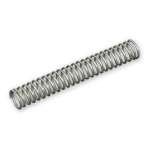
Genuine Dyson OEM spring for DC28 model with 18-month warranty
Masterpart Tool Catch & Spring
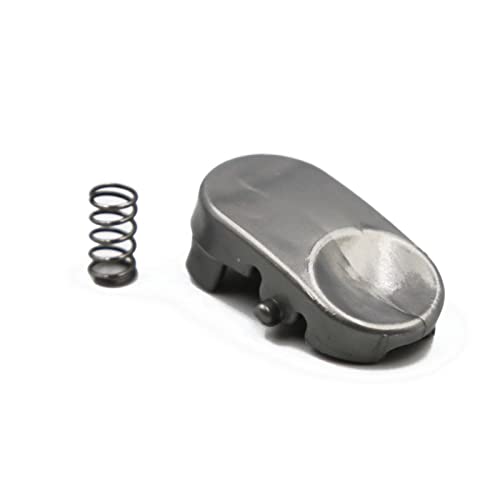
Affordable DC28 spring and latch replacement for Dyson vacuums
LEYURISE 2-Pack Spring Kit
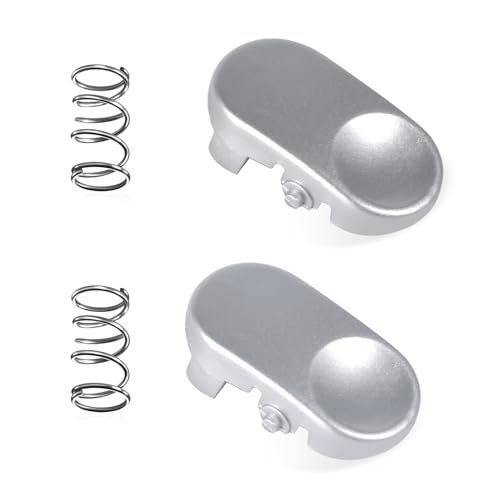
Durable 2-pack spring and button kit for DC28 vacuum maintenance
Eopzol 2-Pack 900199-21
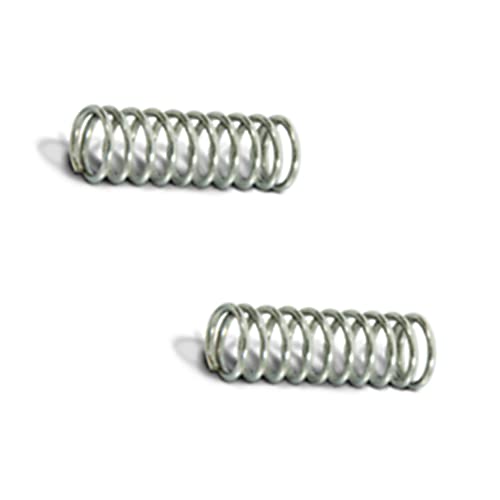
Premium 2-pack spring replacement with extended warranty
Addressing Wheel Issues
Sometimes wheel problems can contribute to recline issues:
- Remove any debris blocking the wheels
- Ensure wheels spin freely
- If necessary, remove wheels to clean the axles
- Apply a small amount of lubricant to wheel axles
- Reattach wheels securely
If the wheels are damaged and need to be replaced.
Dyson Dc28 Wheel Replacement
Dyson DC28 Wheel
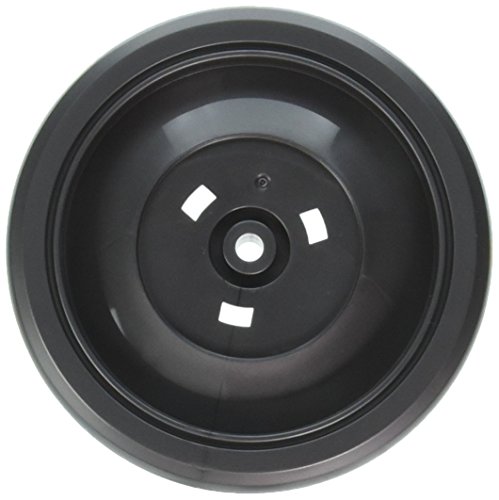
Official wheel replacement for Dyson DC28 vacuum
Dyson DC28 Axle Wheel

OEM axle replacement for smooth operation
Dyson DC28 Stand Wheel
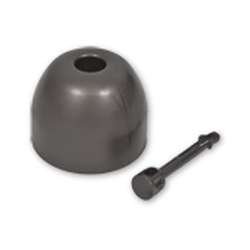
Official stand wheel for DC28 vacuum
Preventative Maintenance Tips
Regular Cleaning Schedule
To prevent recline issues from recurring:
- Empty the dust container after each use
- Clean the filters according to Dyson’s recommended schedule
- Periodically check the recline mechanism for dust buildup
- Wipe down the exterior of the vacuum regularly
Periodic Lubrication
- Apply a small amount of silicone lubricant to the hinge mechanism every 3-6 months
- Lubricate wheel axles if you notice any squeaking or resistance
- Use only recommended lubricants to avoid attracting more dirt
Proper Storage Practices
- Store the vacuum in an upright position
- Avoid leaning it against walls where it might fall
- Keep in a clean, dry area away from extreme temperatures
Frequently Asked Questions (FAQ)
Why does my Dyson DC28 get stuck in the upright position?
The most common reason is dust and debris accumulation in the pivot mechanism. Over time, particles work their way into the moving parts, creating friction and preventing smooth operation. Regular cleaning of the pivot area and latch mechanism can prevent this issue.
Can I use any lubricant on my Dyson vacuum?
No, you should avoid petroleum-based lubricants like Vaseline as they attract dirt and can worsen the problem. Silicone-based spray lubricants are recommended because they don’t attract dust. WD-40 can be used sparingly as an alternative.
How often should I clean the recline mechanism?
For optimal performance, inspect and clean the recline mechanism every 3-6 months, depending on usage. If you use your vacuum frequently or in particularly dusty environments, more frequent maintenance may be necessary.
Is it normal to feel some resistance in the recline mechanism after repair?
Yes, a slight resistance is normal even after repair. The mechanism shouldn’t be completely loose, as some tension helps maintain control during operation. However, you shouldn’t need to apply excessive force to recline the vacuum.
When should I seek professional help for my Dyson DC28?
Consider professional repair if:
– You’ve tried cleaning and lubricating without success
– You notice broken parts that need replacement
– You’re uncomfortable disassembling the vacuum
– The vacuum has suffered significant physical damage
Conclusion
Recline issues with your Dyson DC28 vacuum can be frustrating but are often fixable with some basic troubleshooting and maintenance. Most problems stem from dust accumulation or normal wear and tear, which can be addressed through regular cleaning and occasional lubrication.
By following the step-by-step guide in this article, you can diagnose and repair most recline problems without professional assistance. Remember that preventative maintenance is key to avoiding future issues. Regular cleaning of the pivot mechanism and proper storage will help ensure your Dyson DC28 continues to operate smoothly for years to come.
If you encounter persistent problems despite your best efforts, don’t hesitate to contact Dyson customer service or a qualified repair technician. Sometimes, component replacement is necessary, particularly for vacuums that have seen years of heavy use.






